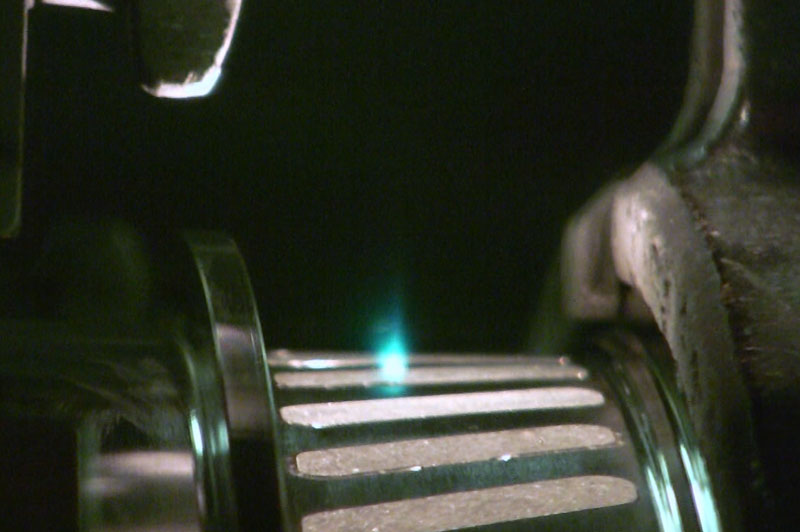The arguments for the electron beam
Argument 1: Welding of hardened components with 2-bath technology
Based on years of experience, Volkswagen has determined and demanded that hard parts have to be welded by using a 2-bath technology - in addition to the necessary pre-heating anyway. This 2-bath technique can be realized very conveniently with the electron beam, because it can jump back and forth between the two process locations extremely quickly. All parameters of these jumps (distance, duration, energy distribution, oscillation, focusing) are only electrical and freely programmable. A change for the purpose of optimization can be carried out easily and solely via the software. In addition, the fast deflection technique of the EB welding process is based on magnetic fields, which generally cannot pollute.
In a LB application (laser beam application), the beam can in principle also be split into two parts, but this requires either an oscillating mirror system or a static beam splitter (prism). Both are systems that get dirty during use and thus reduce the efficiency. In addition, active cooling will probably be required for higher beam powers (for > 4 mm seam depth). The prism has a defined shape and thus allows only a very specific set of parameters to be applied - each change requires the manufacture of a different prism. The LB oscillating mirror has a resonant frequency which is considerably lower than that of the electron beam deflection technique (EBO Jump), thus the freedom in parameter selection is very limited in laser 2-bath welding.
 Electron beam welding has advantages over laser welding
Electron beam welding has advantages over laser welding
Argument 2: The size of the machine (dimensions)
Considering the space requirement of an electron beam machine, it can be seen that this is not larger than that of a laser beam processing system, because such a system comprises not only the laser head with device but also:
- The associated cooling system
- The control system
- The machining table with all fully automated and monitored fixtures
- The actual processing head with fixture (including movement) and protective devices against contamination and overheating.
- The inert gas supplies
- The fume suctions
- Radiation protection
- etc.
When comparing complex, fully automated systems for electron beam or LB welding, all required upstream and downstream operations are always necessary for the same task for both systems. Therefore, complete electron beam and LB welding cells have comparable space requirements. Due to the automated handling, protective fencing must also be provided. Especially with the laser beam, additional radiation protection has to be integrated, which is already provided by the vacuum chamber during the EB welding process.
Conventional LB welding systems in gear manufacturing (seam depths of approx. 2 mm with flat coupling bodies) therefore have the same dimensions as electron beam systems when integrated into the operational material flow.
Argument 3: The operating costs
In terms of operating costs, EB welding has clear advantages over laser welding because the specific consumption of gases, energy and cooling has been proven to be significantly higher.

 Deutsch
Deutsch  English
English  Français
Français  Polski
Polski  Italiano
Italiano 